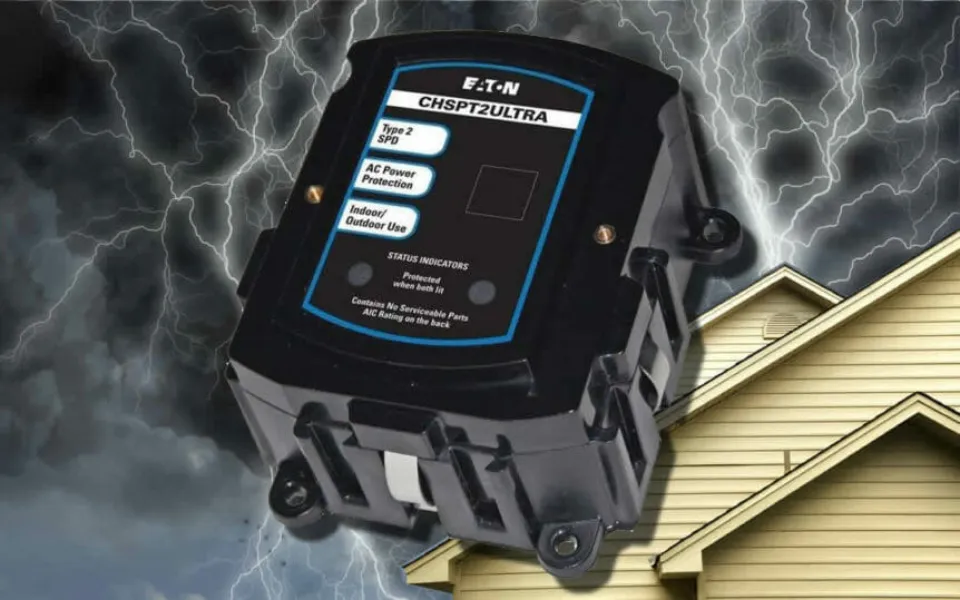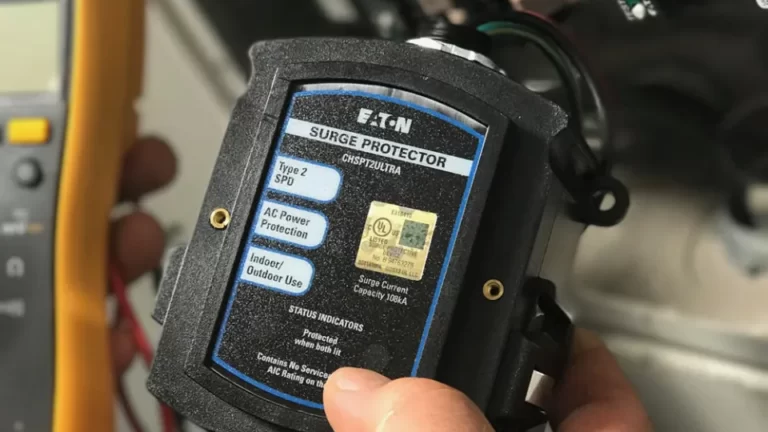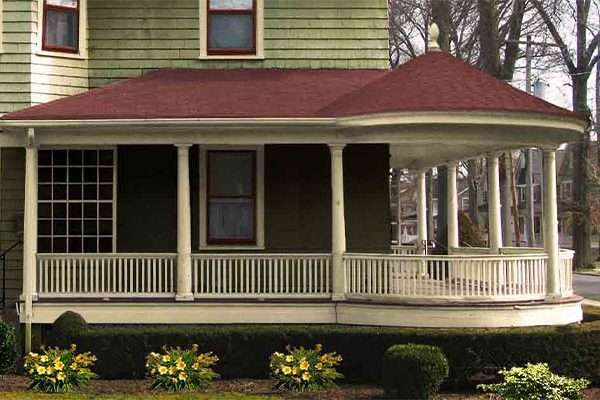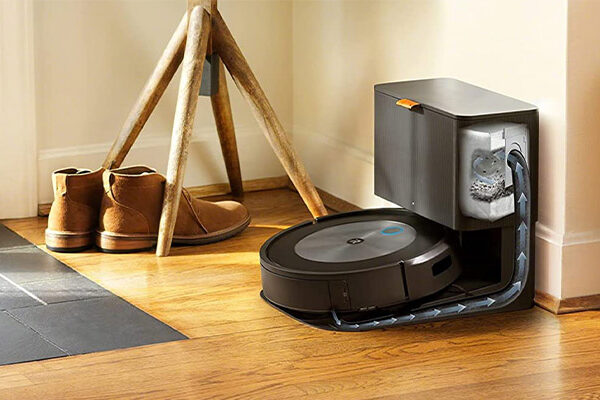Are you unsure if a whole-house surge protector is necessary? As with any purchase, it can help to outline the pros and cons of whole-home surge protection before pulling out your wallet.
Many people emphasize the large, frightful lightning strikes when comparing whole-house surge protectors to conventional surge protectors. These do occur and ought to be avoided, but they don’t tell the whole story.
Read on to learn more about whole-house surge protection!
Table of Contents
What is a Whole House Surge Protector and How Does It Work?
Before we get into weighing pros and cons, what is a whole house surge protector, exactly? It looks like a gray box on the wall by your house’s electrical panel, so it’s not particularly exciting to look at. But what it does is pretty cool.
This device begins to operate when it detects a voltage anomaly, which could be anything from a lightning strike to a slight flutter of extra voltage. The electronics in your home are protected from damaging spikes by the device’s action of diverting extra voltage into the ground. Whole house surge protectors typically require an electrician to install, in contrast to power strip surge protectors, which can be used immediately after purchase.
Related Post: Best Surge Protectors
What Are the Pros?
The advantages are listed below.
They Protect Your Home’s Appliances
More electronics are present in modern homes today than ever before. However, your home probably contains a number of high-priced microprocessors that require surge protection.
When you install a whole-house surge protector, you’re installing a potent device that responds in less than a nanosecond to divert excess current or voltage during a power surge. By doing this, hazardous voltage or current levels are kept out of your house and your electronics are protected.
Some examples of electronics that are protected when you install a surge protector include:
- Desktop computers
- Televisions
- Laptops/tablets
- Gaming equipment
- Refrigerators
- Humidifiers/HVAC systems
- Smartphones
- Washer/Dryer
- LED strips and other lighting
They Protect Your Home’s Electrical System
A whole-home SPD safeguards not only the appliances in your house but also the entire electrical system.
By stopping electrical surges from ever entering your home, a whole-home surge protector ultimately protects your home’s:
- Electrical wiring
- Electrical sockets
- Electrical circuits
Remember that if your house is unprotected and there is a significant power surge, you may need to replace damaged electrical wiring throughout the house, which could cost up to $8,000 or more.

They Provide Peace of Mind
In addition to potentially costly damage to your home’s electrical system, a power surge can destroy electronics worth thousands of dollars, as we discussed above. What’s worse is that most homeowner’s insurance policies don’t provide coverage for damage brought on by electrical surges.
To avoid this pricey scenario entirely, however, you should install a whole-home surge protector. This will give you the utmost assurance that both your home and your wallet are safe.
What Are the Cons?
Here are a few drawbacks of whole-house surge protection.
Cost of Installation
The cost of installing surge protectors is in addition to the price of the device itself. The surge protector must be connected to your home’s electrical panel during this professional installation. This form of installation ensures that your whole home surge protector protects your whole home from surge events.
They Don’t Stop All Surges
Whole-house surge protectors are actually made to let through surges that don’t reach a certain voltage. Every whole-home SPD comes with a specified “VPR” (voltage protection rating), which determines the maximum voltage the surge protector will let through to your home’s electrical system.
However, a whole-home surge protector with a high VPR might allow in smaller surges that can still gradually harm electrical appliances.
Our suggestion? Ensure you’re installing a whole-home surge protector with a low VPR but also “layer” your home’s surge protection.
Get a whole-home SPD, for instance, with a VPR no higher than 600V, but also make sure that your electrical appliances are protected with point-of-use surge protectors or built-in surge protector outlets. In this manner, the second layer of surge protection directs any excess voltage that bypasses the whole-home SPD.
Types of Surge Protectors
There are three types of surge protectors on the market. When selecting the finest one for your house, you must first identify the surge protection device type.
Type 1. External Power Surges
The Type 1 devices offer the best defense against low-powered surges and external sources. They additionally protect against low-power surges. Surges of this kind are rarely harmful.
Surge protectors are installed at the base of the electrical service meter before the main breaker box. Because this is known as the “line side,” only safe amounts of electricity may enter your home.
The power must be turned off in the house before installing Type 1 surge protection. Professional electricians are hired to complete the installation, which can significantly raise costs.
Type 2. Internal Power Surges
The most widely used surge protectors are type 2 whole-house models, which are the ones we feature in this article. Both the main panel and a sub panel can accommodate their installation. Anybody with some experience in electrical work and knowledge of DIY projects can install them. However, we advise hiring a qualified electrician to complete the installation for you.
One circuit in an electrical panel or every circuit can be protected by type 2 surge devices. This is why it is handy to have a knowledgeable electrician.
New homes should be equipped with a Type 1 or Type 2 device, according to the National Fire Protection Association (NFPA). If you are replacing your service panel, it must include one of these devices.
Type 3. Internal Power Surges
Wall outlet and power strip surge protectors are examples of type 3 point-of-use surge protectors. They are a well-liked and affordable method of shielding your electronics from power surges. It plugs into any household outlet and typically has 4-6 additional outlets. This is a practical method for safeguarding electronics like TVs, computers, or gaming consoles.
Surge arresters are the name given to these gadgets. Surge protectors can prevent the majority of damage and absorb excess power. They aren’t completely successful, though.
How Long Will a Whole House Surge Protector Last?
The lifespan of a whole house surge protector depends on how often and how badly power surges occur in your area. Some top companies warranty their products for 5 years while lasting over 10 years is common. But because of their wear and tear, these gadgets must occasionally be replaced.
However, from our research, a whole-house surge protector in areas with frequent power surges or outages can last for 2 to 3 years.
Related Post: Can A Surge Protector Go Bad?
What If You Need More Than One Whole House Surge Protector?
It’s important to keep in mind that one surge protector might not be adequate to handle the job of safeguarding all of your home’s electrical devices when deciding whether or not you want to pay the installation costs for surge protectors. The surge protector in your home may occasionally become inoperable due to power surges of a certain severity.
Therefore, a qualified electrician might suggest that you have extra surge protectors installed in your home’s electrical panel. The price of these additional surge protectors will be the same as the initial protector.
The Bottom Line: Are Whole House Surge Protectors Worth It?
In conclusion, surge protectors are the best way to protect your homes appliances and electrical system from power surges. Surge protectors do have initial costs associated with purchasing and installation, but they also offer security, peace of mind, and safety.
So, are whole house surge protectors worth it? The average price ranging from $200 to $700 for the whole house surge product and installation is justified when you consider that the potential for equipment damage can cost well over $10,000.
The demand for whole house surge protectors is rising as our homes are filled with increasingly sophisticated but delicate electronics that cannot be shielded by basic power strip surge protectors. The decision to live without the additional peace of mind and rely solely on strip surge protectors is yours.
FAQs
Do Whole House Surge Protectors Work Against Lightning?
Yes! A whole-house suppressor instantly blocks the surge from entering home circuits to provide comprehensive lightning protection. Individual plug-in suppressors cannot shield electronics that are hard-wired rather than plugged in.
What Size Breaker Do I Need for a Whole House Surge Protector?
Whole-house systems should be rated to stop a 40,000-amp surge, at minimum.




